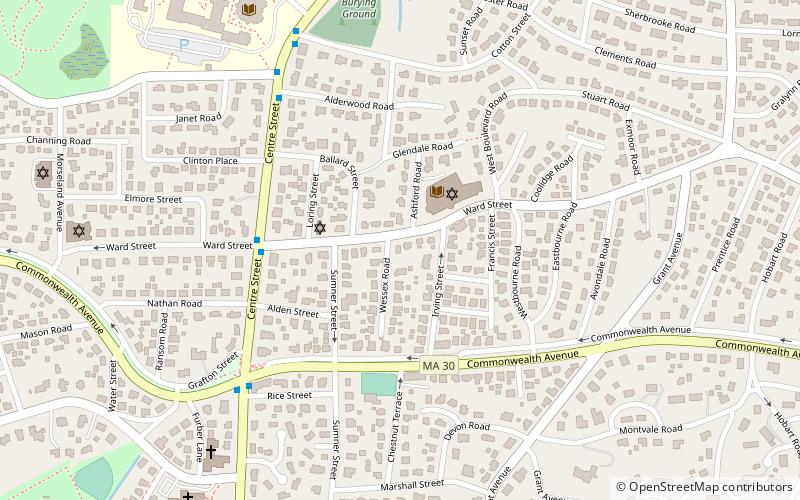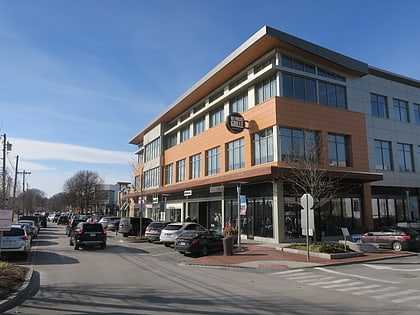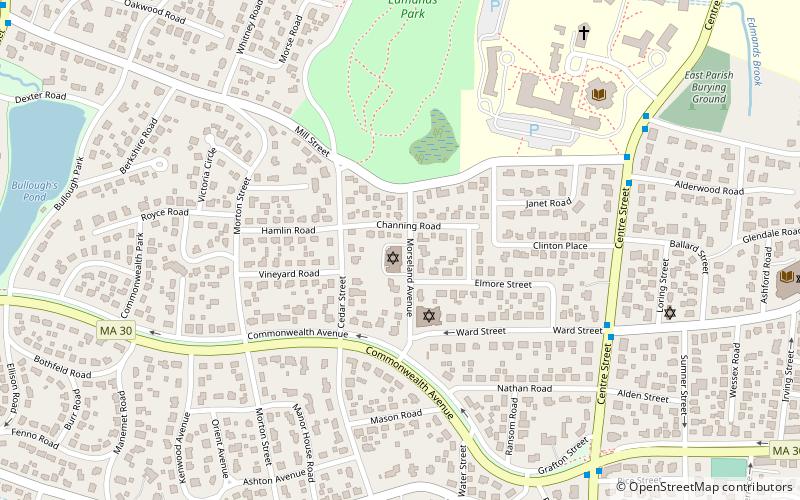Commonwealth Avenue Historic District, Newton


Facts and practical information
The Commonwealth Avenue Historic District of Newton, Massachusetts, encompasses roughly the eastern half of Commonwealth Avenue, extending from Waban Hill Road, near the city line with Boston, westward to Walnut Street. The roadway was laid out in 1894 and completed in 1895. Its design was influenced in part by the local residents, who were willing to give land for some of the route, and the design of Boston portions of the road, in which Frederick Law Olmsted was involved. Construction of the roadway was followed by the construction of fashionably large residences along its route, which took place mostly between the road's construction and about 1920. The district includes 188 residential properties, which are mainly built in the revival styles popular in the early 20th century. The district was added to the National Register of Historic Places in 1990. ()
Newton (Newton Centre)Newton
Commonwealth Avenue Historic District – popular in the area (distance from the attraction)
Nearby attractions include: Alumni Stadium, The Shops at Chestnut Hill, Piccadilly Square, Newton Commonwealth Golf Course.
Frequently Asked Questions (FAQ)
Which popular attractions are close to Commonwealth Avenue Historic District?
How to get to Commonwealth Avenue Historic District by public transport?
Light rail
- Newton Centre • Lines: D (16 min walk)
- Boston College • Lines: B (31 min walk)
Bus
- Walnut St @ Prospect St • Lines: 59 (23 min walk)
- 791 Walnut St • Lines: 59 (25 min walk)
Train
- Newtonville (32 min walk)











